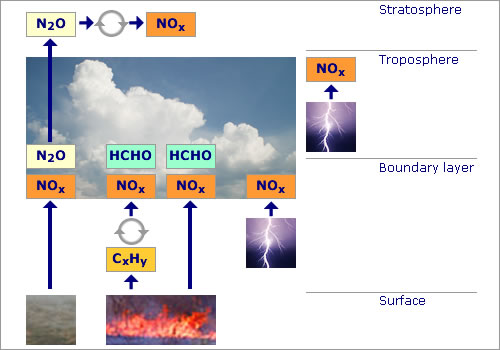
Fig 1.1.6.3.1: Production and transport of NOx, HCHO and N2O from biomass burning and lightning.
Image: AT2-ELS
NOx and HCHO are generated in a number of ways by biomass burning:
- NO2 and HCHO as combustion products. Biomass burning not only produces NOx but also gases such as CO2, CO, CH4 and larger hydrocarbons, and particulates, mainly organic and black carbon. At its highest temperatures combustion produces simple molecules such as CO2, H2O, NO, N2O, N2 and SO2. As the fire dies down oxygen-starved smouldering produces CO and many partially oxygenated organic compounds such as formaldehyde, acetaldehyde, methanol, acetone and methane.
- NO2 and HCHO from hydrocarbon oxidation. As already noted, the oxidation of hydrocarbons such as CH4 by the OH radical also produces NO2 and HCHO.
- NOx and N2O are also produced through nitrification by bacterial action in soil. It has been suggested that the increased concentrations of ammonium compounds in fire ash lead to more nitrification after a fire, thereby producing significant additional emissions of NOx and N2O.

Fig 1.1.6.3.2: Block diagram of the catalytic chain
reaction that oxidises methane, CH4.
Significant outputs are NO2 and HCHO, and significant inputs are CH4
and NO.
Image: AT2-ELS